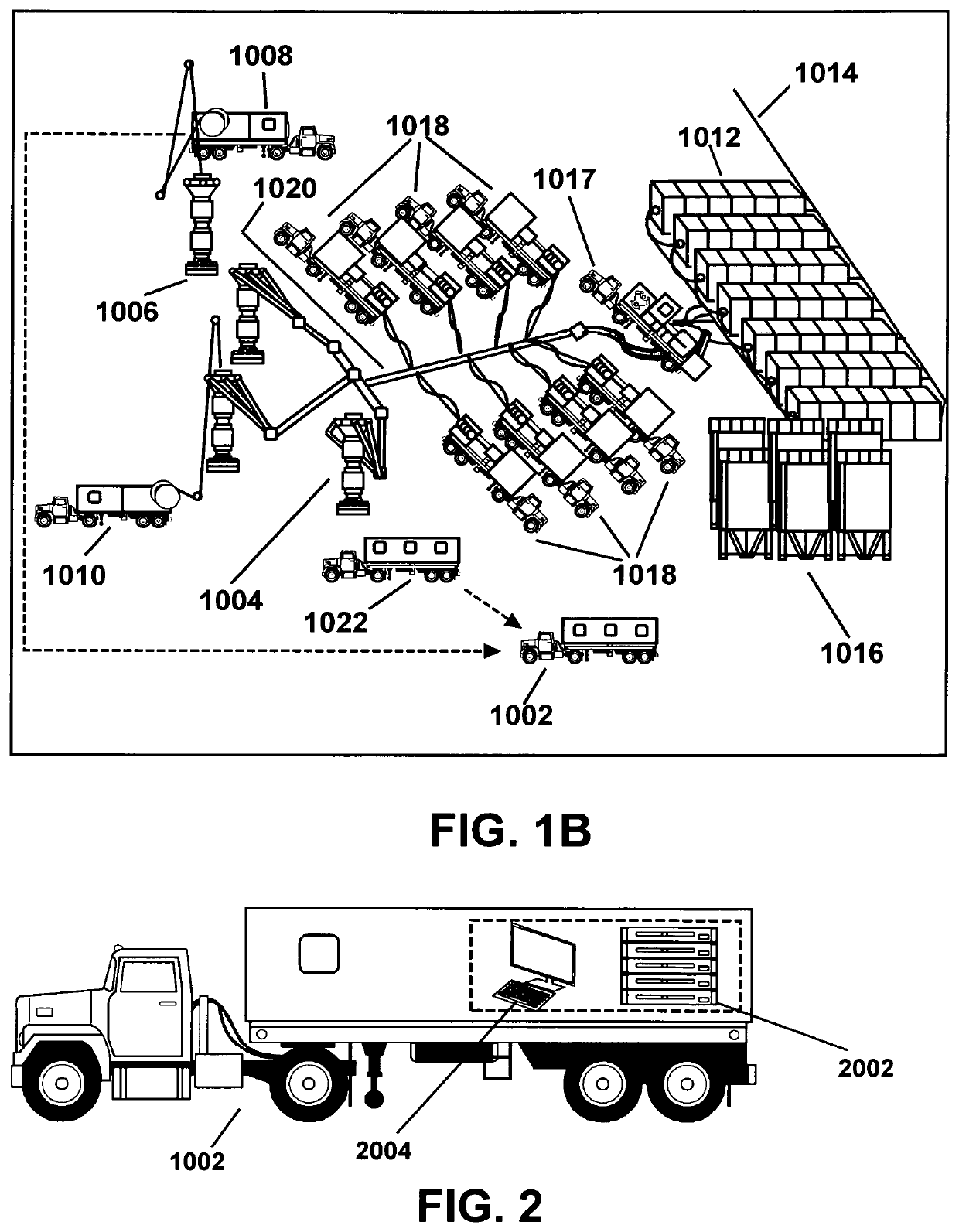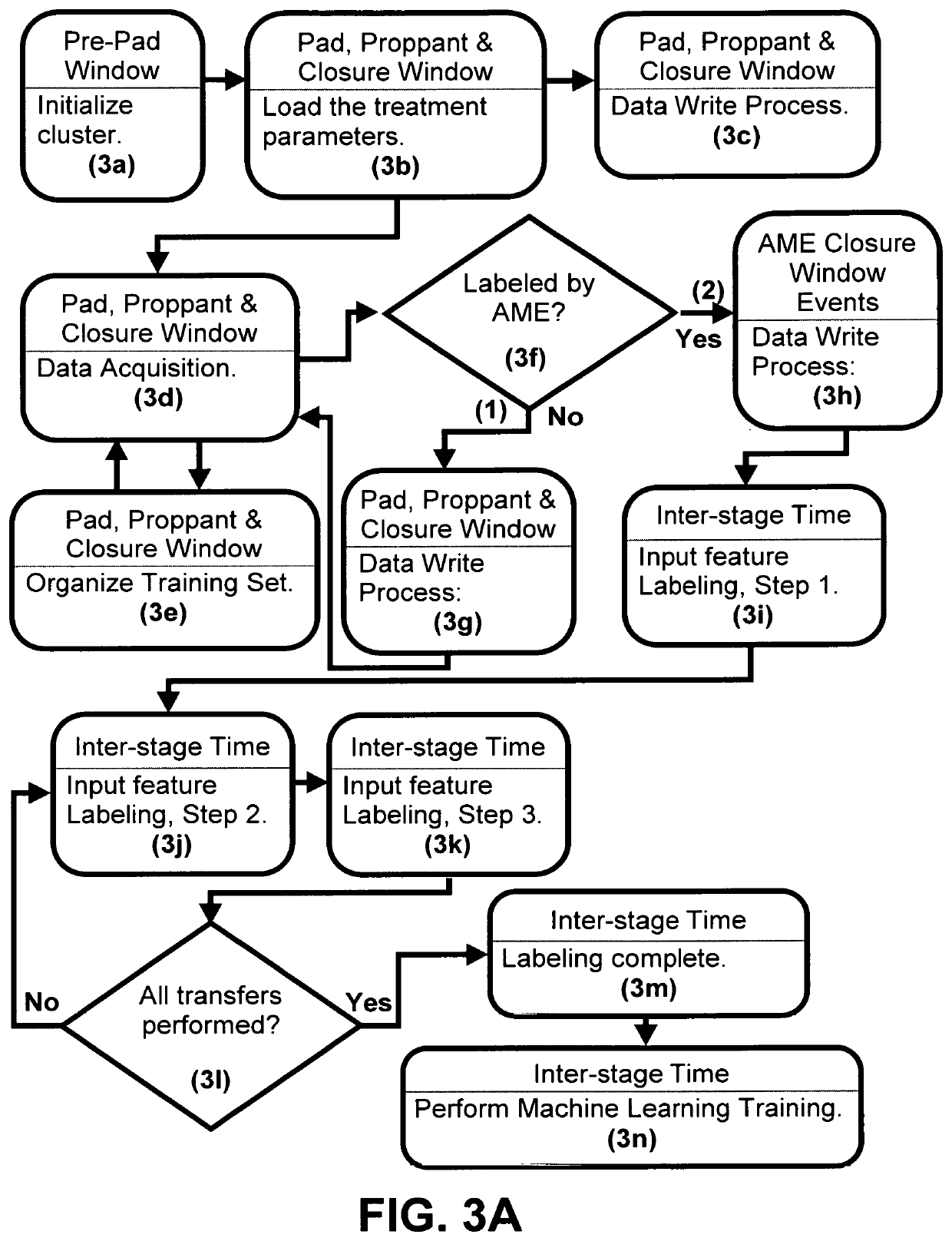Systems and processes for labeling hydraulic fracture data using acoustic emitters for supervised learning algorithm mapping and classifying of hydraulic fractures in wells
a technology of hydraulic fracture and labeling system, applied in seismology for waterlogging, borehole/well accessories, instruments, etc., can solve the problems of inability to substitute, inability to accurately predict the half-length error of the propped fracture, and inability to carry indelible uncertainty, so as to reduce the quantity of acoustic micro-emitters, reduce the cost of oil and gas operators, and efficiently determin
- Summary
- Abstract
- Description
- Claims
- Application Information
AI Technical Summary
Benefits of technology
Problems solved by technology
Method used
Image
Examples
first embodiment
Operation of FIGS. 3A-3S, 4A & 4B, and 5.
FIG. 3A presents a small-scale view of FIGS. 3B-3I. As illustrated in FIG. 3B, the cluster is first initialized (3a) ensuring the computing resources and hardware are sufficient for the job's 1) designed stage data volumes and bandwidth for the pad-, proppant- and closure-window, and 2) the data volume and bandwidth of AME closure labels. The cluster may be designed to have double the volume of data to be collected in the three windows and for the AME closure labels detected in the closure-window. This embodiment is designed for 100 TB data for the total job and a maximum of 1 TB of AME labels. At a predetermined real-time data input, (this embodiment uses 550 MBps), the treatment parameters are acquired and loaded (3b) into the system first memory which has been predetermined from the job data volume and bandwidth, provisioned and initialized in the previous step. The system first memory is comprised of registered memory provisioned from the...
second embodiment
Operation of FIGS. 6A-6M, 7A & 7B and 8.
As illustrated in FIG. 6B, the cluster is first initialized (6a) ensuring the computing resources and hardware are sufficient for the job's 1) designed stage data volumes and bandwidth for the pad-, proppant- and closure-window, and 2) the data volume and bandwidth of AME closure labels. The cluster may be designed to have double the volume of data to be collected in the three windows and for the AME closure labels detected in the closure-window. This embodiment is designed for 100 TB data for the total job and a maximum of 2 TB of AME labels. At a predetermined real-time data input, (this embodiment uses 550 MBps), the treatment parameters are acquired and loaded (6b) into the system first memory which has been predetermined from the job data volume and bandwidth, provisioned and initialized in the previous step. The system first memory is comprised of registered memory provisioned from the memory modules which may include (FIGS. 7A & 7B) 700...
third embodiment
Operation of FIGS. 9A-9T, 10A-10C and 11A-11G.
As illustrated in FIG. 9B, the cluster is first initialized (9a) ensuring the computing resources and hardware are sufficient for the job's 1) designed stage data volumes and bandwidth for the pad-, proppant- and closure-window, and 2) the data volume and bandwidth of AME closure labels. The cluster may be designed to have double the volume of data to be collected in the three windows and for the AME closure labels detected in the closure-window. This embodiment is designed for 100 TB data for the total job and a maximum of 1 TB of AME labels. At a predetermined real-time data input, (this embodiment uses 550 MBps), the treatment parameters are acquired and loaded (9b) into the system first memory which has been predetermined from the job data volume and bandwidth, provisioned and initialized in the previous step. The system first memory is comprised of registered memory provisioned from the memory modules which may include (FIGS. 10A-10...
PUM
 Login to View More
Login to View More Abstract
Description
Claims
Application Information
 Login to View More
Login to View More - R&D
- Intellectual Property
- Life Sciences
- Materials
- Tech Scout
- Unparalleled Data Quality
- Higher Quality Content
- 60% Fewer Hallucinations
Browse by: Latest US Patents, China's latest patents, Technical Efficacy Thesaurus, Application Domain, Technology Topic, Popular Technical Reports.
© 2025 PatSnap. All rights reserved.Legal|Privacy policy|Modern Slavery Act Transparency Statement|Sitemap|About US| Contact US: help@patsnap.com



